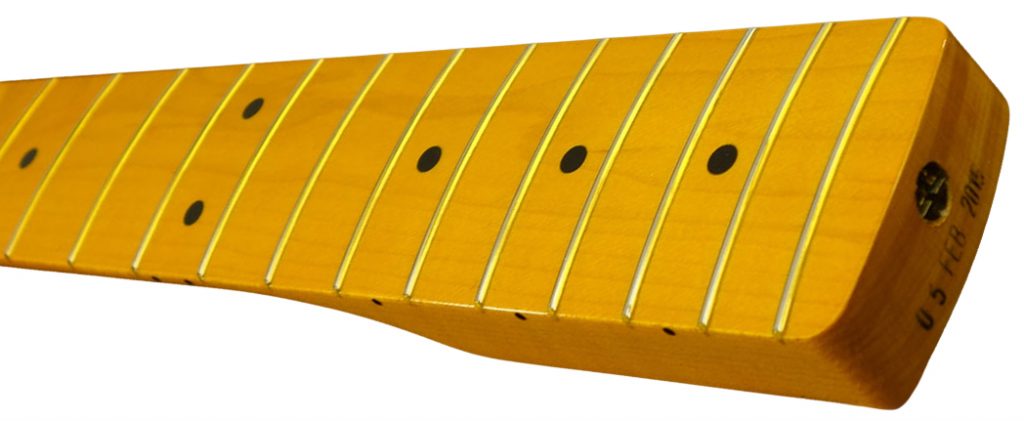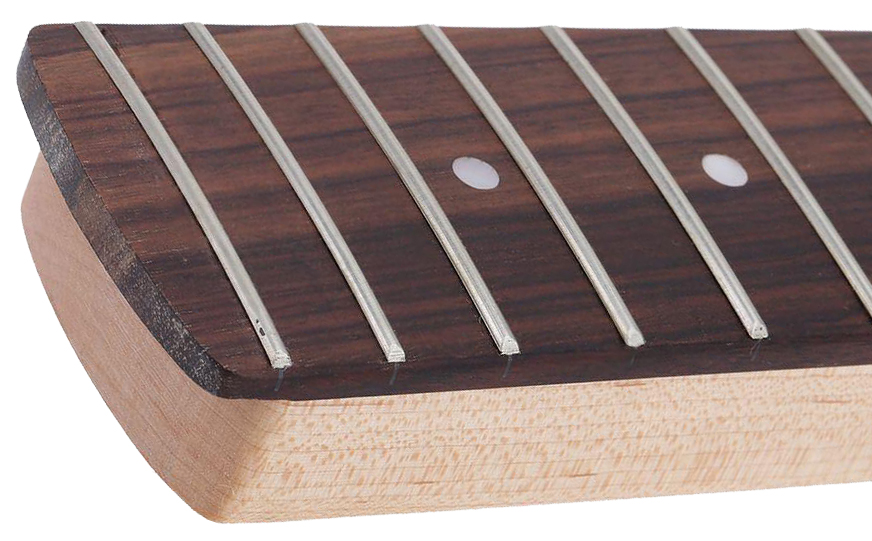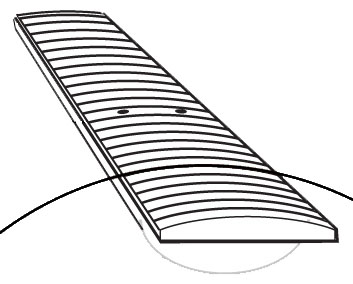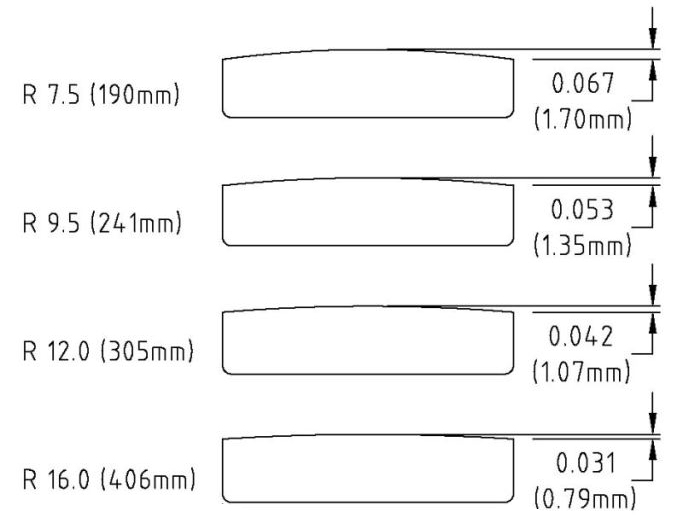Fingerboard (or fretboard)
It represents the fundamental component of the neck. We push the strings on it with our fingers in order to produce sounds with different pitches. Normally it is a thin rectangular layer of wood but sometimes plastic resins or carbon fibers are used instead. Thickness may vary and it is glued to the front of the neck. Frets are set on it. The most used types of wood are rosewood and ebony. Sometimes the fingerboard can be part of the neck both come as a single piece of wood. Maple is mostly used in this case and frets are set directly on it.

ONE-PIECE MAPLE FINGERBOARD WITH NECK

GLUED ROSEWOOD FINGERBOARD
There also exists fingerboards without frets (fretless) , which are analogous to the fingerboards of string instruments such as the double bass, the cello, the viola and the violin.

FRETLESS FINGERBOARD
The fingerboard can have a more or less accentuated radius of curvature. A flat fingerboard facilitates the adjustment of a low action and bending, while a more rounded fingerboard facilitates the execution of barre chords (not really a problem peculiar the bass players). The radius is measured in inches: the higher the number, the flatter the keyboard and vice versa, the measures generally range from 7.25” (very rounded like the old Fenders) to 20” and more (almost flat like in Warwick basses and in 5- or 6-string basses). In the middle range we have, for examples, the current Fender models with 9.5”, the StingRay by Music Man with 11”, the basses by G&L with 12”.

CURVATURE RADIUS

MEASURES OF CURVATURE RADIUS
There is no lack of fingerboards with variable radius of curvature (compound radius), rounded at the beginning, near the nut, and becoming flatter towards the body of the instrument.
